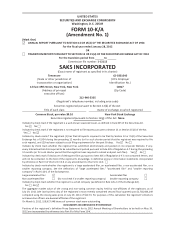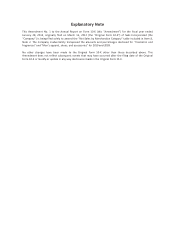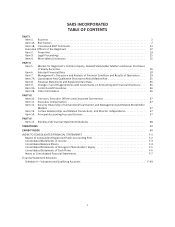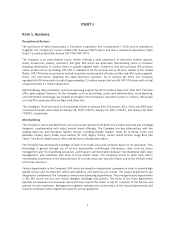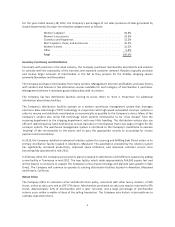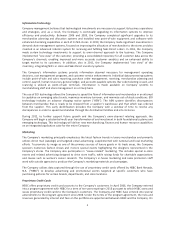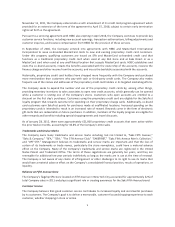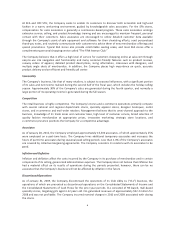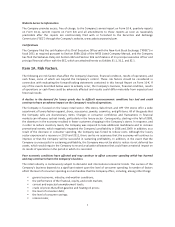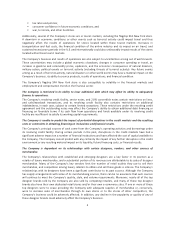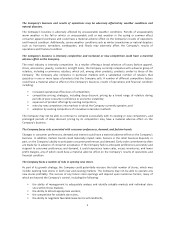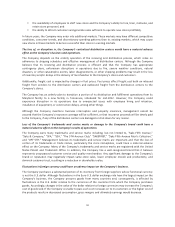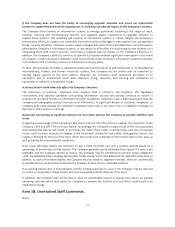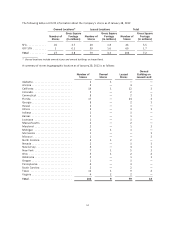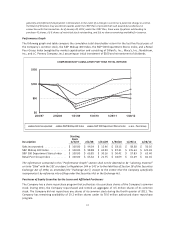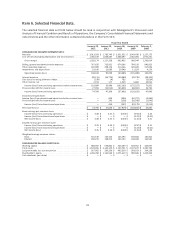Saks Fifth Avenue 2011 Annual Report Download - page 10
Download and view the complete annual report
Please find page 10 of the 2011 Saks Fifth Avenue annual report below. You can navigate through the pages in the report by either clicking on the pages listed below, or by using the keyword search tool below to find specific information within the annual report.▪tax rates and policies;
▪consumer confidence in future economic conditions; and
▪war, terrorism, and other hostilities.
Additionally, several of the Company’s stores are in tourist markets, including the flagship SFA New York store.
A downturn in economic conditions or other events such as terrorist activity could impact travel and thus
negatively affect the results of operations for stores located within these tourist markets. Increases in
transportation and fuel costs, the financial condition of the airline industry and its impact on air travel, and
sustained recessionary periods in the U.S. and internationally could also unfavorably impact results of the stores
located within these tourist markets.
The Company’s business and results of operations are also subject to uncertainties arising out of world events.
These uncertainties may include a global economic slowdown, changes in consumer spending or travel, an
increase in gasoline and commodity prices, epidemics, and the economic consequences of natural disasters,
military action, political events or terrorist activity (including threats of terrorist activity). Any future events
arising as a result of terrorist activity, natural disasters or other world events may have a material impact on the
Company’s business, its ability to source products, results of operations, and financial condition.
The Company’s flagship SFA New York store is also susceptible to volatility in the financial markets and
employment and compensation trends in the financial sector.
The Company is restricted in its ability to incur additional debt which may affect its ability to adequately
finance its operations.
The Company’s revolving credit facility, senior notes, and 2.0% convertible notes contain restrictions on liens,
and sale/leaseback transactions, and its revolving credit facility also contains restrictions on additional
indebtedness, in each case, subject to certain limited exceptions. These restrictions under the revolving credit
agreement and the outstanding notes may affect the Company’s ability to obtain additional debt financing or
financing on favorable terms if its cash flow from operations and funds available under its revolving credit
facility are insufficient to satisfy its working capital requirements.
The Company is unable to predict the impact of potential disruptions in the credit markets and the resulting
costs or constraints in obtaining financing on its business and financial results.
The Company’s principal sources of cash come from the Company’s operating activities and borrowings under
its revolving credit facility. During certain periods in the past, disruptions in the credit markets have had a
significant adverse impact on a number of financial institutions and have affected the cost of capital available to
the Company. The Company cannot predict with any certainty the impact of any further disruption in the credit
environment or any resulting material impact on its liquidity, future financing costs, or financial results.
The Company is dependent on its relationships with certain designers, vendors, and other sources of
merchandise.
The Company’s relationships with established and emerging designers are a key factor in its position as a
retailer of luxury merchandise, and a substantial portion of its revenues are attributable to its sales of designer
merchandise. Many of the Company’s key vendors limit the number of retail outlets they use to sell their
merchandise, and competition among luxury retailers to obtain and sell these goods is intense. The Company’s
relationships with its designers have been a significant contributor to its past success. Although the Company
has supply arrangements with some of its merchandising sources, there can be no assurance that such sources
will continue to meet the Company’s quality, style, and volume requirements. Moreover, nearly all of the top
designer brands sold by the Company are also sold by competing retailers, and many of these top designer
brands also have their own dedicated retail stores and/or their own e-commerce sites. If one or more of these
top designers were to cease providing the Company with adequate supplies of merchandise or, conversely,
were to increase sales of merchandise through its own stores or to the stores of other competitors, the
Company’s business could be adversely affected. In addition, any decline in the popularity or quality of any of
these designer brands could adversely affect the Company’s business.
8

